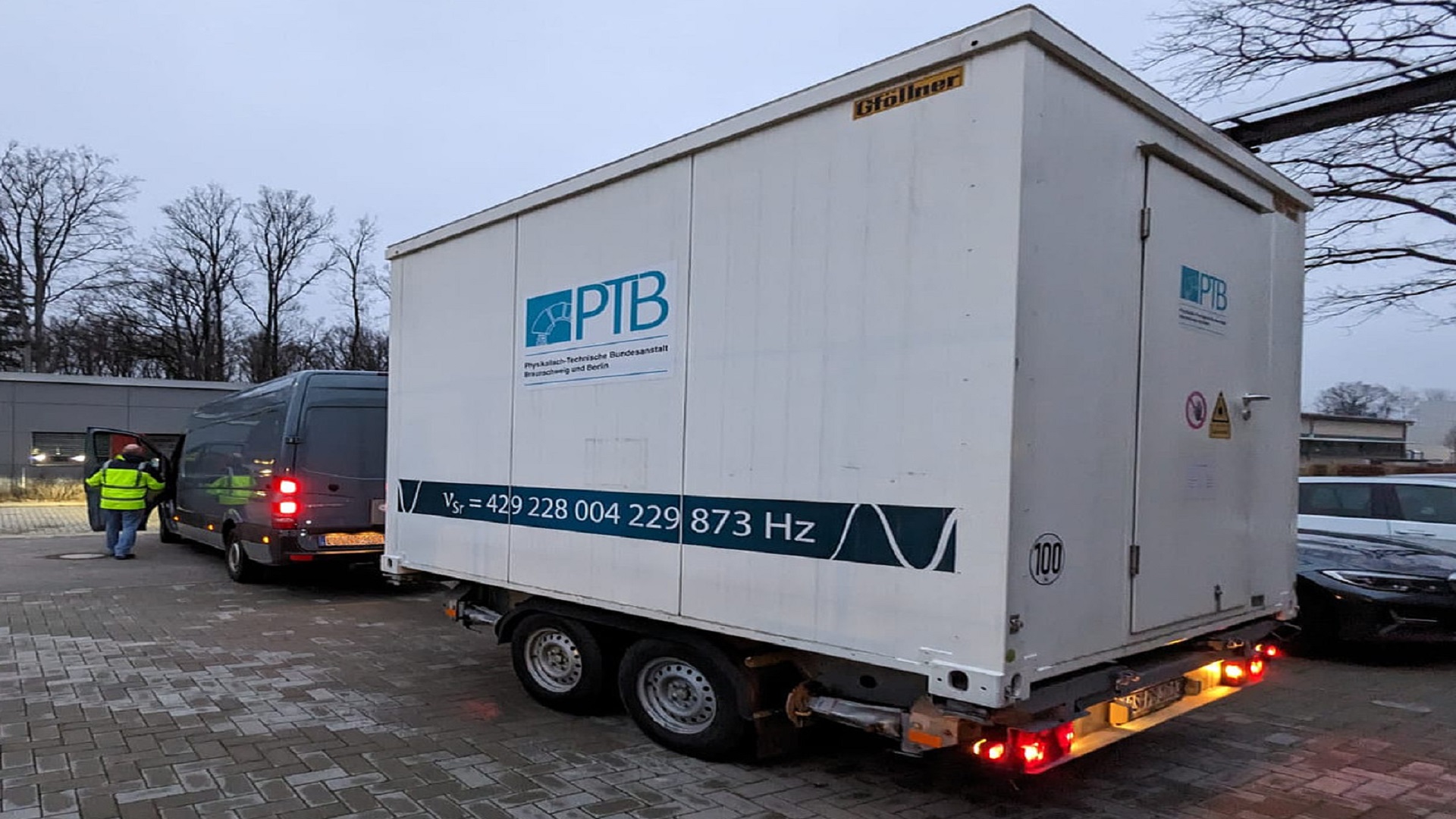Science
Scientists Unveil Mobile Atomic Clock with Unmatched Precision

Scientists in Germany have introduced the world’s most precise mobile atomic clock, capable of remaining accurate to within one second over a staggering period of 15 billion years. Developed by researchers at the Physikalisch-Technische Bundesanstalt (PTB), Germany’s national metrology institute, this innovative optical strontium lattice clock marks a significant advancement in timekeeping technology.
Optical atomic clocks utilize the stable microwave frequencies emitted by the vibrations of atoms, such as cesium or strontium, to achieve remarkable accuracy. Traditional atomic clocks, while effective, typically require intricate laboratory setups to isolate the atoms from environmental interferences. The newly designed transportable clock, which fits within a mobile trailer, addresses these challenges by providing flexibility and precision in various settings.
Revolutionary Timekeeping Technology
The clock employs laser-cooled strontium atoms, which are chilled to just a few millionths of a degree above absolute zero, making them colder than the depths of outer space. Within the device, an ultrahigh-vacuum chamber maintains these extreme cooling conditions, ensuring that the atoms remain free from external disturbances that could compromise their accuracy.
The researchers noted, “Within the system’s core, strontium atoms, excited by laser light, glow blue with fluorescence.” These atoms are guided along a path into a cooled copper radiation shield, which plays a crucial role in maintaining the clock’s stability. The strontium atoms oscillate at a stable frequency, acting as the clock’s “pendulum,” thereby enabling time to be measured with extraordinary precision.
According to the researchers, “Metrology institutes such as PTB are developing several types of optical clocks worldwide.” Comparing these clocks at their full precision level is vital for both fundamental research and the validation of independent national standards. The transportable optical atomic clock holds the potential to revolutionize fields such as geodesy, where precise timekeeping can enhance measurements of altitude and mapping of Earth’s gravitational field.
Precision Beyond Expectations
The sensitivity of this clock is remarkable; even minimal thermal radiation from surrounding equipment could alter its readings. To mitigate this, the copper radiation shield cools the strontium atoms to –148 degrees Fahrenheit (–100 degrees Celsius), preventing stray heat from disrupting their oscillations.
Initially operational in 2023, the clock has undergone extensive testing. A recent study revealed a relative uncertainty of just 2.1 × 10−18, positioning the transportable strontium lattice clock among the most accurate timekeeping devices available. Remarkably, it reaches its full precision after less than a day of operation, a record for mobile setups.
“If it were to run continuously, it would gain or lose about one second only after 15 billion years,” the researchers explained in a press release. This extraordinary level of accuracy not only demonstrates the clock’s potential for metrology but also opens up new avenues for scientific exploration and technological advancements.
The clock’s portability allows for direct comparisons in remote labs or measurement sites, eliminating the need for complex fiber-optic networks or satellites typically required for the world’s most accurate clocks.
“Beyond its value for metrology, it also enables chronometric geodesy, the measurement of altitude differences using clocks, at a previously unattainable level of accuracy,” the researchers concluded. The findings of this groundbreaking research have been published in the journal Quantum Science and Technology, highlighting the significant steps taken toward enhancing precision in scientific measurement.
-

 Lifestyle3 months ago
Lifestyle3 months agoLibraries Challenge Rising E-Book Costs Amid Growing Demand
-

 Sports3 months ago
Sports3 months agoTyreek Hill Responds to Tua Tagovailoa’s Comments on Team Dynamics
-

 Sports3 months ago
Sports3 months agoLiverpool Secures Agreement to Sign Young Striker Will Wright
-

 Lifestyle3 months ago
Lifestyle3 months agoSave Your Split Tomatoes: Expert Tips for Gardeners
-

 Lifestyle3 months ago
Lifestyle3 months agoPrincess Beatrice’s Daughter Athena Joins Siblings at London Parade
-

 World3 months ago
World3 months agoWinter Storms Lash New South Wales with Snow, Flood Risks
-

 Science3 months ago
Science3 months agoTrump Administration Moves to Repeal Key Climate Regulation
-

 Business3 months ago
Business3 months agoSoFi Technologies Shares Slip 2% Following Insider Stock Sale
-

 Science2 months ago
Science2 months agoSan Francisco Hosts Unique Contest to Identify “Performative Males”
-

 Science3 months ago
Science3 months agoNew Tool Reveals Link Between Horse Coat Condition and Parasites
-

 Sports3 months ago
Sports3 months agoElon Musk Sculpture Travels From Utah to Yosemite National Park
-

 Science3 months ago
Science3 months agoNew Study Confirms Humans Transported Stonehenge Bluestones









